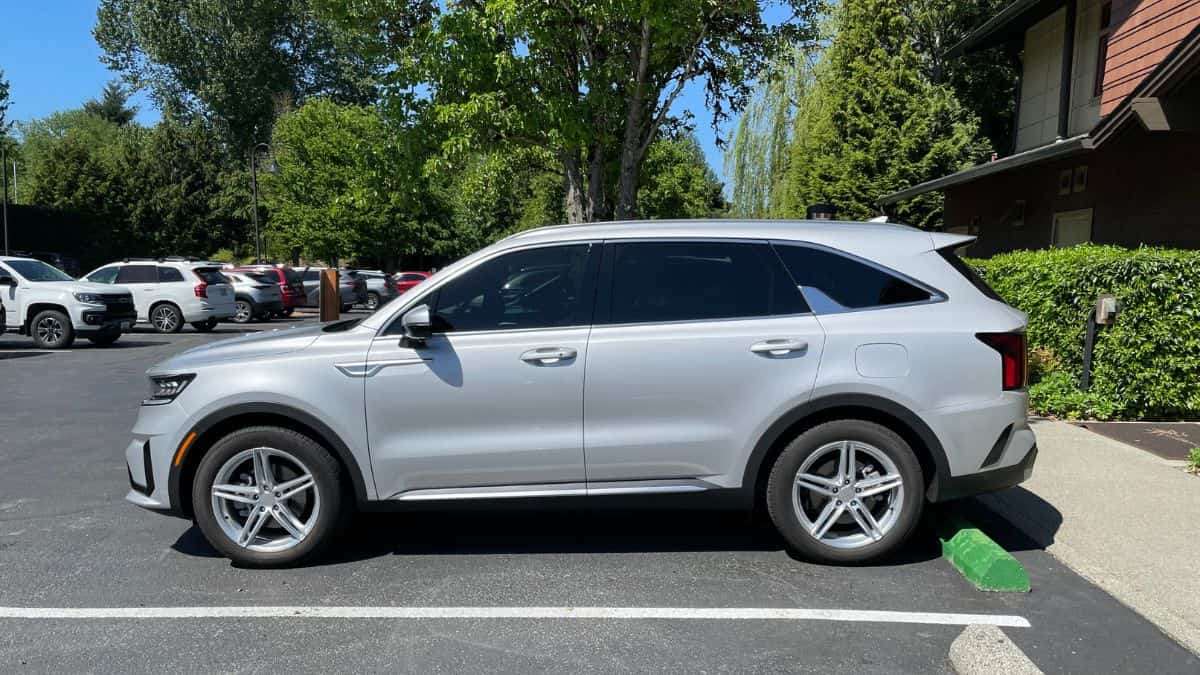In June of last year, I did two max electric only, or EV, range tests of my Kia Sorento PHEV. The first test had me drive a course of mostly rural back roads with a maximum speed of 45 MPH. The second test saw me repeat the same course except the second time through there were some minor modifications to the conditions of the drive and I drove the PHEV as hard as I could while keeping it in EV mode and not going more than 5 MPH over the speed limit. This time through the test course, I drove more like I did in the second test, though I wasn’t trying to accelerate as hard as I could without kicking on the gas engine. Instead I was driving it normally, for me, which means I tried to keep up with traffic, get up to speed at the upper end of the EV only mode’s capability, and coast as much as possible to conserve battery, sort of a blend of the two tests but favoring the second test.
Also different this time through, I had one passenger with me and just the roof racks on (without the paddle board mounts) and of course some different, lighter weight alloy wheels as well. My expectation for the drive was that I would get almost exactly the same results as I did last year. I am happy to say that that is essentially what happened. I managed to get 40 miles from a full charge or about 3.6 miles per kWh, which was slightly less than what I got in the first test, obviously due to the somewhat less efficient driving pattern. I am glad that I have now established a pattern, a baseline perhaps, as I will repeat this test annually for as long as I own my Kia Sorento PHEV. I fully expect that I will see the same results each year (assuming the next set of tires I mount on it are of similar efficiency) or other external factors don’t affect the results, and that it would likely be somewhere around 10 years before I actually could detect some battery degradation. I say that because the full capacity of the Sorento’s battery is not usable, somewhere north of 2 kWh is held in reserve by the Sorento in order to reduce stress on the battery and prolong its useful life. Since the battery is warrantied for 10 years or 100,000 miles, I fully expect it to last the warranty period without much, or any, detectable loss of range, if not even longer than that. I say this because Kia has active thermal management built into their PHEV batteries and also perhaps because the battery is not used to produce heat for the cabin (thus preserving more battery cycles for driving). If it did not have active battery thermal management, I would expect to see degradation of the battery in as little as a few years, as I did with my 2011 Nissan LEAF.
Does that match your experience with PHEV or EV batteries? Would you expect a different scenario, and if so, why? Please leave your comments and questions below.
Image courtesy of Justin Hart.
Justin Hart has owned and driven electric vehicles for over 15 years, including a first generation Nissan LEAF, second generation Chevy Volt, Tesla Model 3, an electric bicycle and most recently a Kia Sorento PHEV. He is also an avid SUP rider, poet, photographer and wine lover. He enjoys taking long EV and PHEV road trips to beautiful and serene places with the people he loves. Follow Justin on Twitter for daily KIA EV news coverage.





